gull spec. Larus spec.
Involves large white-headed gulls. 744 individuals were counted, much more than the 466 last year. Highest count 471 on 19 February, which is a record high for our surveys. These were probably mostly Black-tailed Gulls, as it seems this species is one of the earliest gulls to migrate north (compare the charts of Black-tailed Gull with Heuglin’s Gull).

 Black-tailed Gull Larus crassirostris
Black-tailed Gull Larus crassirostris
A total of 377 birds were counted, with a highest count of 129 on 21 February. That’s a new record count for our surveys, with the previous highest count 128 on 19 February 2022.
The second, multi-year graphs illustrates that this is an early migrant off Po Toi.

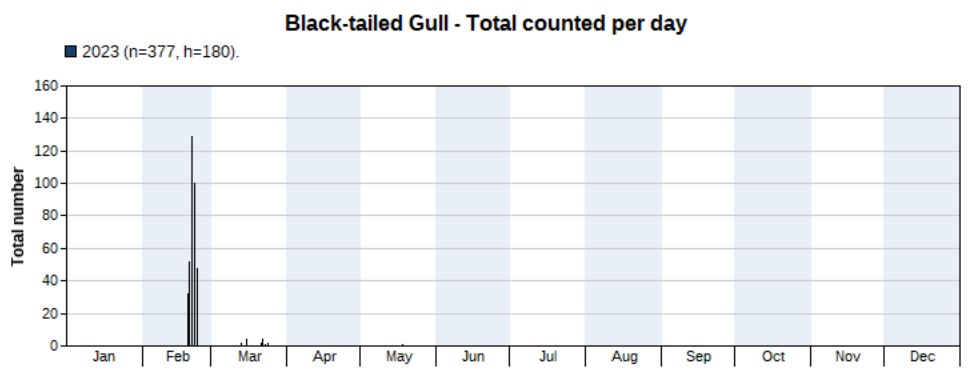

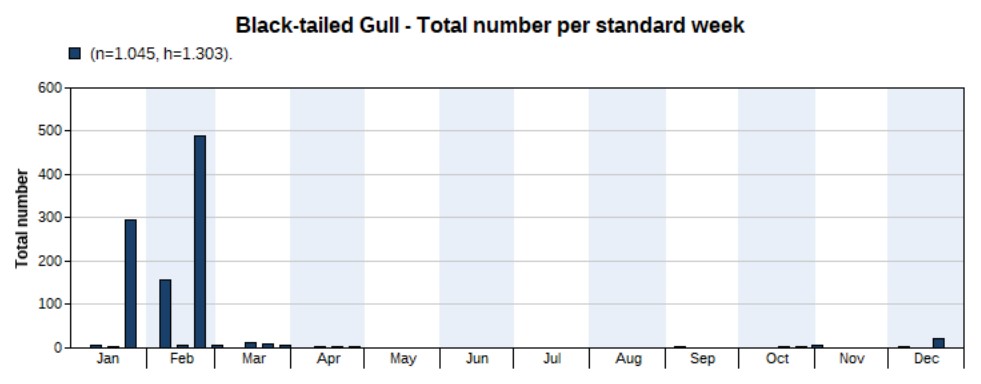 Slaty-backed Gull Larus schistisagus
Slaty-backed Gull Larus schistisagus
One record: an immature on 16 May. This is an exceptional late record and apparently the first for May in Hong Kong. The previous latest record was 22 April.
Lesser Black-backed Gull (Heuglin's Gull) Larus fuscus heuglini
Only 337 individuals were counted. But as last year, the peak occurred in the second half of March.



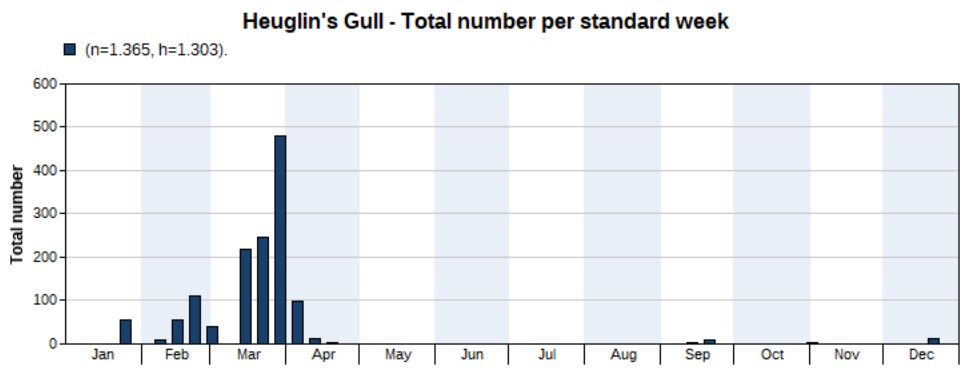 tern spec.
tern spec.
During our surveys in 2023 only 449 unidentified terns were counted, compared to 6,555 in 2022 and 11,183 in 2021. The main reason is that we did not do any seawatching in the autumn of ’23, which is precisely the peak season for terns.

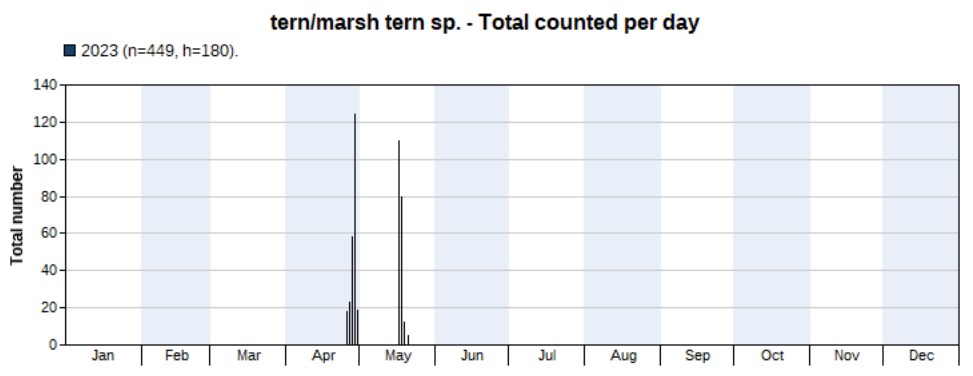

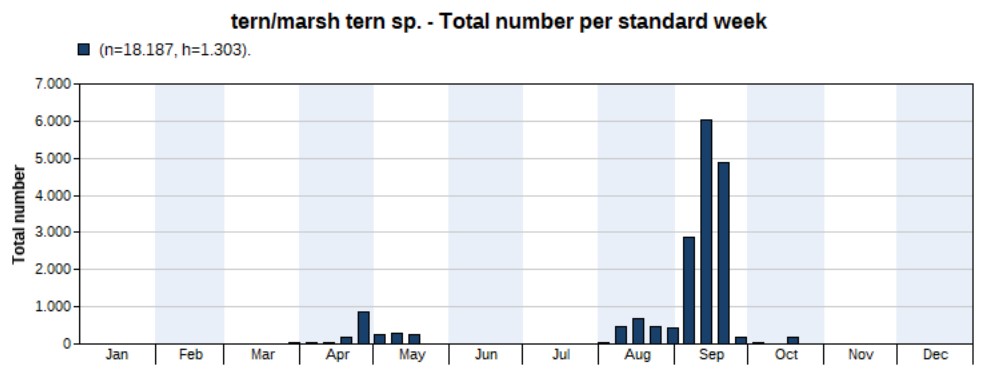 Gull-billed Tern Gelochelidon nilotica
Gull-billed Tern Gelochelidon nilotica
48 individuals were counted, between 26 April and 20 May.

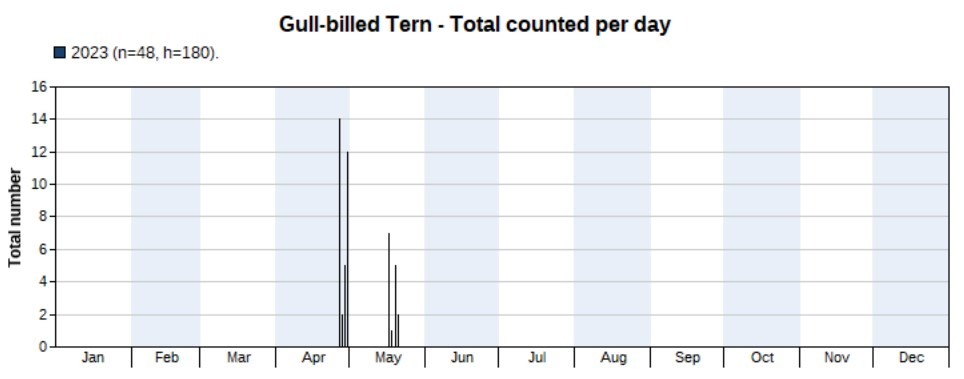

 Caspian Tern Hydroprogne caspia
Caspian Tern Hydroprogne caspia
Only four birds were counted: two on 22 March and two on 23 March.
As noted already, no seawatching was done in autumn this year. According to our observations in 2021, the only year in which we did surveys in November, that month saw the peak of Caspian Terns. But neither in 2022 or 2023 could this be confirmed, although it seems unlikely that November 2021 was exceptional.

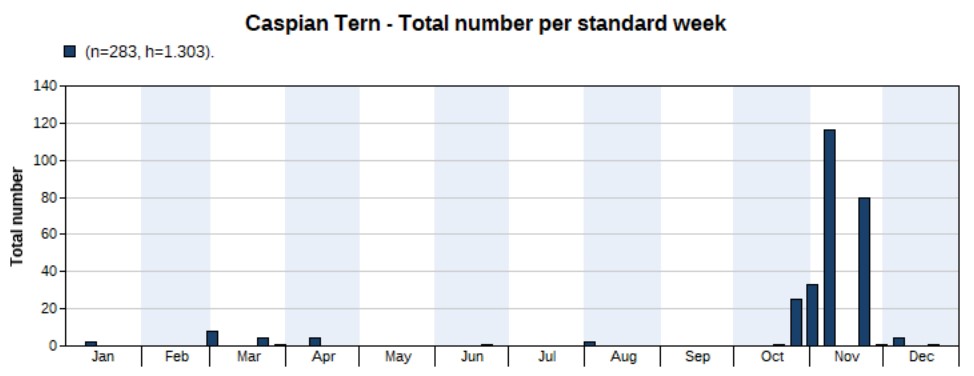 Greater Crested Tern Thalasseus bergii
Greater Crested Tern Thalasseus bergii
With much less seawatching hours, the number of Greater Crested Terns was low in comparison with previous years, with only 310 counted. However, the first individual occurred on 21 February, making it the earliest record for Hong Kong and de facto the first winter record. The previous earliest record was on 16 March.

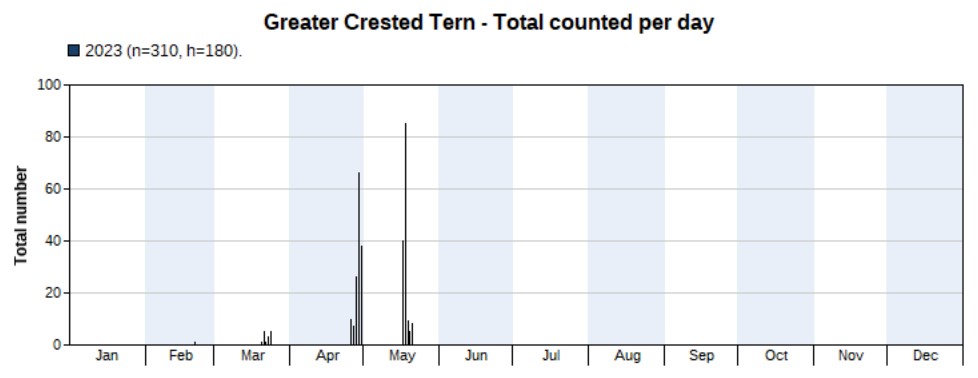

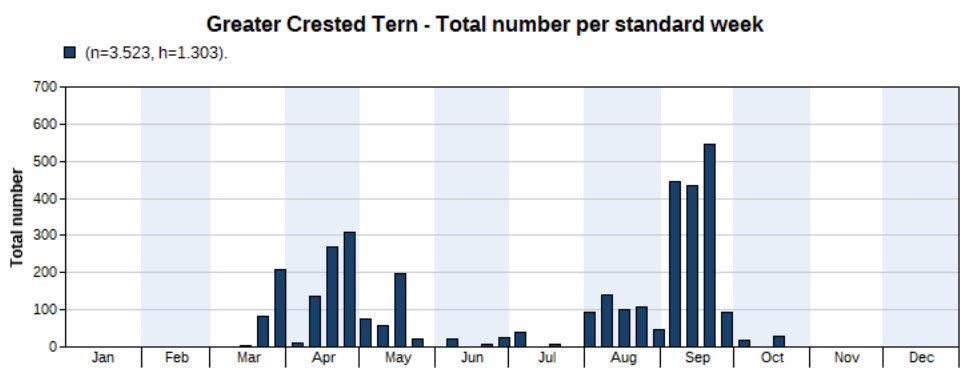 Little Tern Sternula albifrons
Little Tern Sternula albifrons
Spring 2023 appeared to be an amazing time for Little Terns. No less than 1,185 were counted, between 25 April and 20 May.
The best day was 28 April, with 974 individuals. This is a conservative count, as undoubtedly a(n unknown) number of uncounted birds flew by as well: some small groups were coincidently seen flying over the rocks, an area where we usually don’t spend much time looking. This was by far the highest count ever in Hong Kong. The previous high count was 400 during the passage of typhoon Leo on 2 May 1999 (Cape D’Aquilar). As weather circumstances on 28 April 2023 did not appear to be extraordinary, it makes you wonder how exceptional (or not) a day with a thousand migrating Little Terns in Hong Kong actually is.

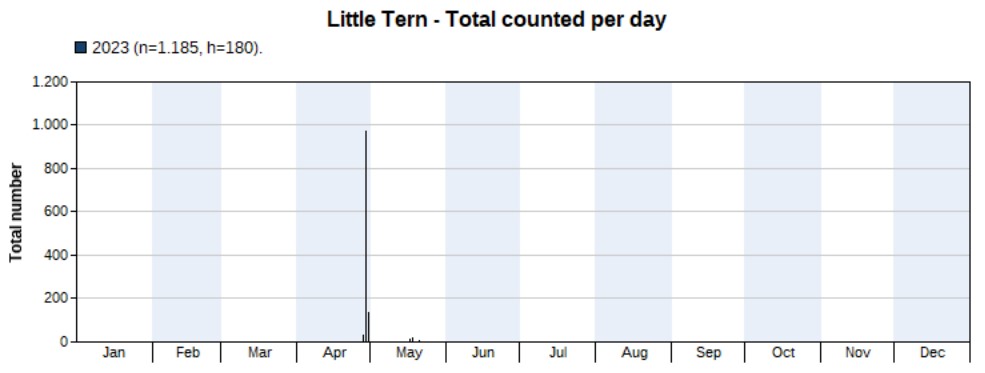

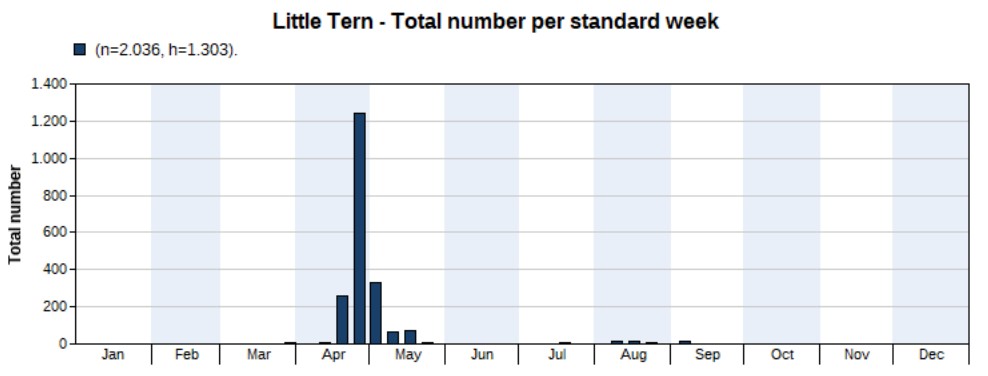 Aleutian Tern Onychoprion aleuticus
Aleutian Tern Onychoprion aleuticus
A total of 230 were counted. That number is low, even lower than the highest count in one day last year (312). This species most likely occurs in much higher numbers than our (fewer) counts last year would suggest.

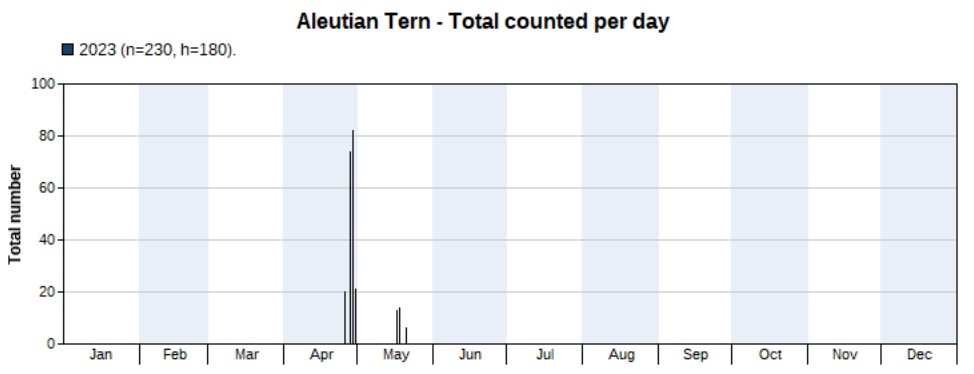

 Bridled Tern Onychoprion anaethetus
Bridled Tern Onychoprion anaethetus
As noted in previous yearly reviews, a bit of a tricky species to count, as it is also a local breeder and these birds might fly along the same route, to feed out at sea, as migrants do. So counting locals for migrants cannot be excluded. The graph below nevertheless showed our attempt to only count what we believe to be migrants.
372 individuals were counted, between 25 April and 20 May.



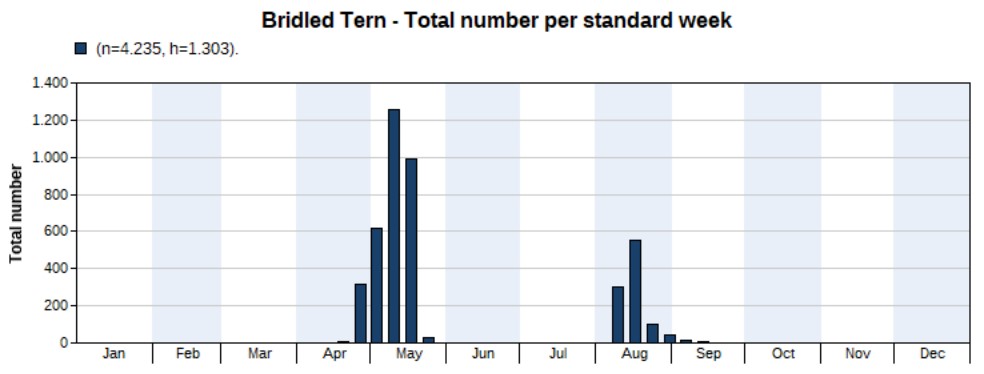 Roseate Tern Sterna dougallii
Roseate Tern Sterna dougallii
22 migrating individuals counted between 29 April (just one on this quite early date) and 20 May.
A word on trying to distinguish the local breeders from migrants. Migrants tend to fly low, fast and straight ahead, and sometimes in mixed groups with other terns. Some Roseate Terns appeared as migrants in very small groups as well. We identify the species as local birds when they fly higher, much slower and often with more buoyant wingbeats, regularly feeding, and not in a straight direction. Locals tend to be vocal as well.

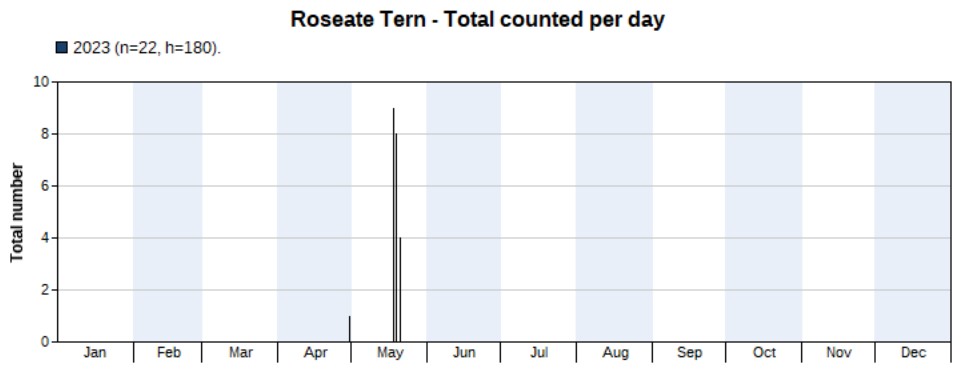


[
Last edited by badesc at 6/01/2024 08:54 ]


